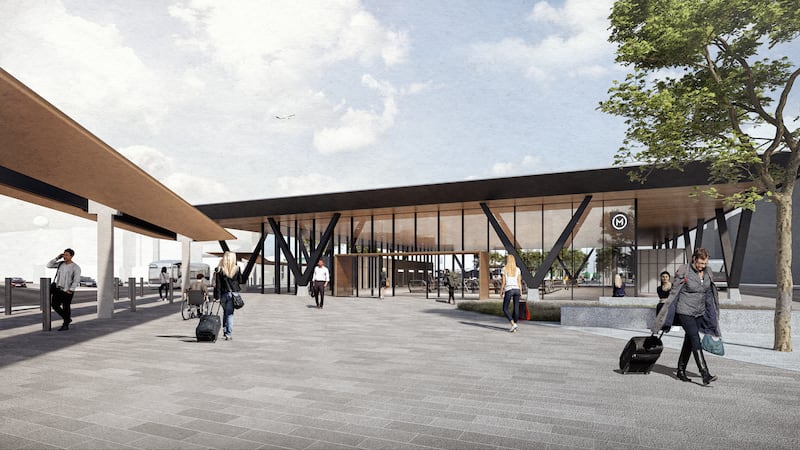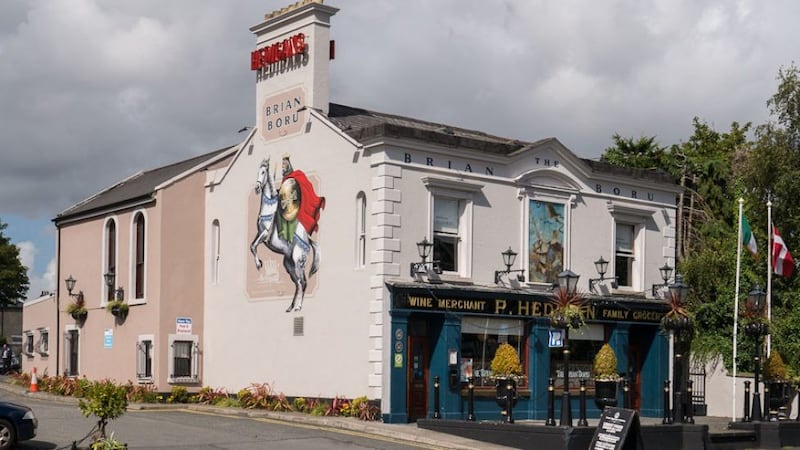In the glacially-paced evolution of Dublin’s metro, a six-week planning hearing may seem like an insignificant blip. However, for those with concerns about the €9.5 billion MetroLink line, this was their chance be heard by the people who will recommend whether to approve the project – An Bord Pleanála’s inspectors.
The development of a metro for Dublin has been the policy of successive governments for more than 20 years, and an aspiration for decades longer. Transport Infrastructure Ireland’s (TII) 16-stop MetroLink evolved from Metro North, a €3.5 billion line from Swords to St Stephen’s Green that was approved in 2010, shelved in 2011, revived in 2015, extended to Sandyford in 2018 and scaled to Charlemont in 2019.
The hearing was split into two modules: the first dealing with issues including noise and damage to property, and the second focusing on land and property acquisition. Anyone who tried to raise an issue in the incorrect module was politely, but swiftly, instructed to move on by board inspectors Niall Haverty and Barry O’Donnell who ran proceedings with remarkable efficiency.
In each module speakers were scheduled depending on which part of the 18.8km line their submission related to, beginning from the start of the route at the Estuary station, north of Swords, and travelling south to Dublin Airport, Ballymun, Glasnevin, Phibsborough, the city centre and St Stephen’s Green, before ending at Charlemont.
RM Block

There were relatively few speakers at the northern section of the line, though some residents near stations sought assurances in relation to construction near their homes, and there were no representations about the Ballymun station. A number of north Dublin politicians did outline the importance of the line to their constituents, many of whom had bought houses 20 years ago on the promise of a metro service.
However, to the south of Ballymun at the border of Glasnevin, the tenor of the hearing changed, with speakers living near the proposed Collins Avenue station vehemently opposed to its location. The chosen site was in front of Our Lady of Victories Church and residents’ groups told the inspectors the station would be better located 500m south in Albert College Park, which they felt would be a less disruptive construction site.
That this was the wrong site, residents said, was demonstrated by the fact the park, close to DCU, has been designated for construction anyway, to build an emergency escape shaft for the tunnel, needed because of the distance of the church site from the next station, Griffith Park. All this seemed illogical and unfair to local residents. TII said the church site provides a better interchange with bus services and caters for a greater population.
Moving past the Griffith Park station, the next spot of significant contention was around the Glasnevin station. Owners of older houses in an architectural conservation area close to Glasnevin Cemetery were concerned about the effect of tunnelling on their homes, and those in newer apartments beside the station were worried about having a construction site on their doorsteps.

The station is also the site of one of the few properties schedule for demolition for MetroLink, the 200-year-old Brian Boru pub, with its owners reluctantly accepting the loss of the pub but hoping it could be commemorated in a renaming of the station.
[ Glasnevin MetroLink station may be renamed in memory of Brian Boru pubOpens in new window ]
Heading through Phibsborough to the Mater station, there were again homeowners and also businesses concerned about their proximity to the construction site, but the majority of submissions centred on the choice of location in the Four Masters Park. Although the park, owned by the Mater hospital, is not open to the public, locals were still concerned the station work would irrevocably change it, with one saying it would become a hard-surfaced “skateboarders’ paradise”.
Moving into the city centre, there were few objections until the line hit Tara Street. This is the only point on the proposed line where homes are designated for demolition. The board heard from some residents of the College Gate apartment complex, and eight Dublin City Council houses on Townsend Street, all of which are due to be levelled for the Tara station.
One couple told the board how, after years of renting in the College Gate block and saving to buy, they signed the final conveyancing papers for their apartment the day the route of MetroLink was announced. A visually-impaired woman living in one of the council houses spoke of having adapted her home at her own expense, using the entirety of an inheritance from her late mother. Owners in College Gate will be paid for their apartments, and the residents in the council housing will be rehoused, but both groups were concerned they would not secure the same standard of accommodation in the future.
Several TII representatives said they deeply regretted the loss of these homes.
[ Visually impaired woman pleads for home not to be demolished for MetroLinkOpens in new window ]
It might be assumed this would be the toughest issue the State transport body would meet at the hearing, but things were not going to get any easier. At St Stephen’s Green it came up against another State body, the Office of Public Works (OPW).
The OPW was particularly concerned about the removal of trees which it said could be “construed as demolition of part of St Stephen’s Green.” TII said it was “committed to making every effort to mitigate the impacts on St Stephen’s Green,” but the impasse had not been resolved before the hearings ended.
Moving on to the final stop, Charlemont, TII encountered perhaps its stiffest opposition. Residents living around Dartmouth Square were particularly concerned about the impact on their homes, most of which were protected structures. There was also a strong view Charlemont should not be the metro terminus, because the area was not suitable, in terms of parking and road infrastructure.
TII said Charlemont was not a terminus but an “interchange”, which resulted protracted arguments over the meaning of the word terminus, which, over two days, didn’t appear to get anywhere.
Once the end of the line had been reached, the board heard from parties who wanted to make submissions on the overall project. This ranged from business organisations including DublinTown and Dublin Chamber who support MetroLink, to cycling and commuter advocates, who support the line overall but called for better bicycle parking and toilet provision, and for the metro to run 24 hours.
The board also heard from people who put forward alternative rail schemes, some involving an underground on different or shortened routes to MetroLink, others proposing overground rail instead. These included a surprise celebrity speaker, environmentalist Duncan Stewart, who favours an overground solution. Scrapping MetroLink in favour of an alternative system aside, TII said shortening MetroLink would be “not very far away from refusing” it.
Several parties who had made written submissions to the board, often in very rancorous terms, did not attend the hearing. These were mostly companies or institutions, and TII would, on an almost daily basis, tell the inspectors agreement had been reached with these parties. One notable exception related to a site owned by Lidl at the proposed Northwood station north of Ballymun.
The supermarket chain said it wanted the station redesigned to support the weight of a 15-storey apartment block it wanted to build, but for which it had yet to secure, or even seek, planning permission. TII was rather flummoxed by this intervention, as it told the hearing it thought it had reached agreement with Lidl on the sort of the development which could be permitted, and this was the first time it was hearing about the 15-storey proposal.
The hearing was closed, on schedule, last Thursday, but that is far from the end of the process. Considerable additional documentation was submitted by TII during the course of the hearing and An Bord Pleanála has ordered this material be issued for public consultation. The board will then decide whether to reopen the hearings, or consider new submissions in writing only.
The inspectors will then spend time wading through all the documentation and submissions in relation to MetroLink, before making a recommendation to the board. If the board ultimately decides to grant a railway order for the project, TII will seek tenders for the construction before formulating a final business case which it will submit to the Government for approval. If Government gives the go ahead MetroLink could start running in the mid-2030s.
- Join us for The Irish Times Inside Politics podcast live in Belfast on April 10th
- Sign up for push alerts and have the best news, analysis and comment delivered directly to your phone
- Find The Irish Times on WhatsApp and stay up to date










